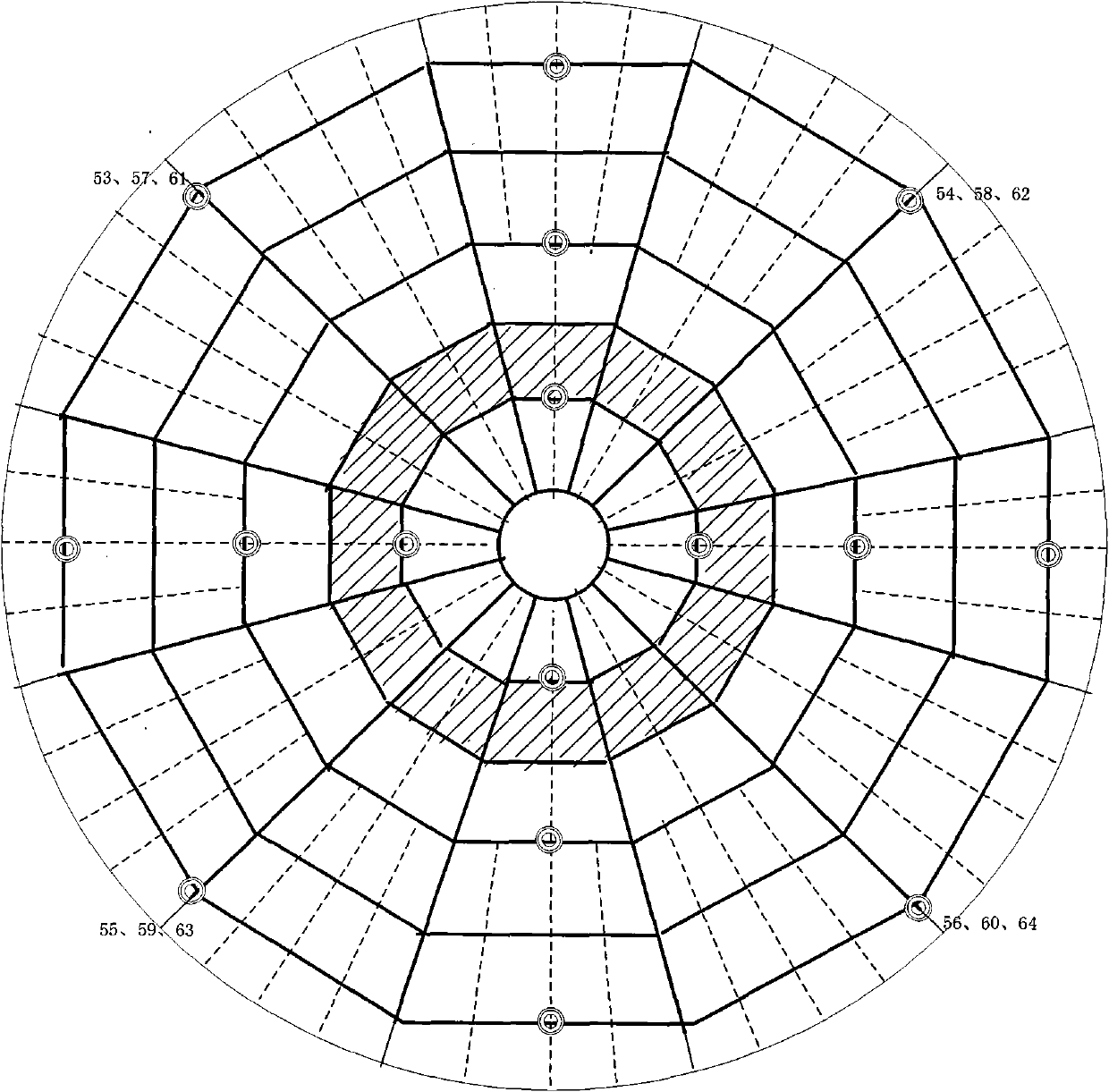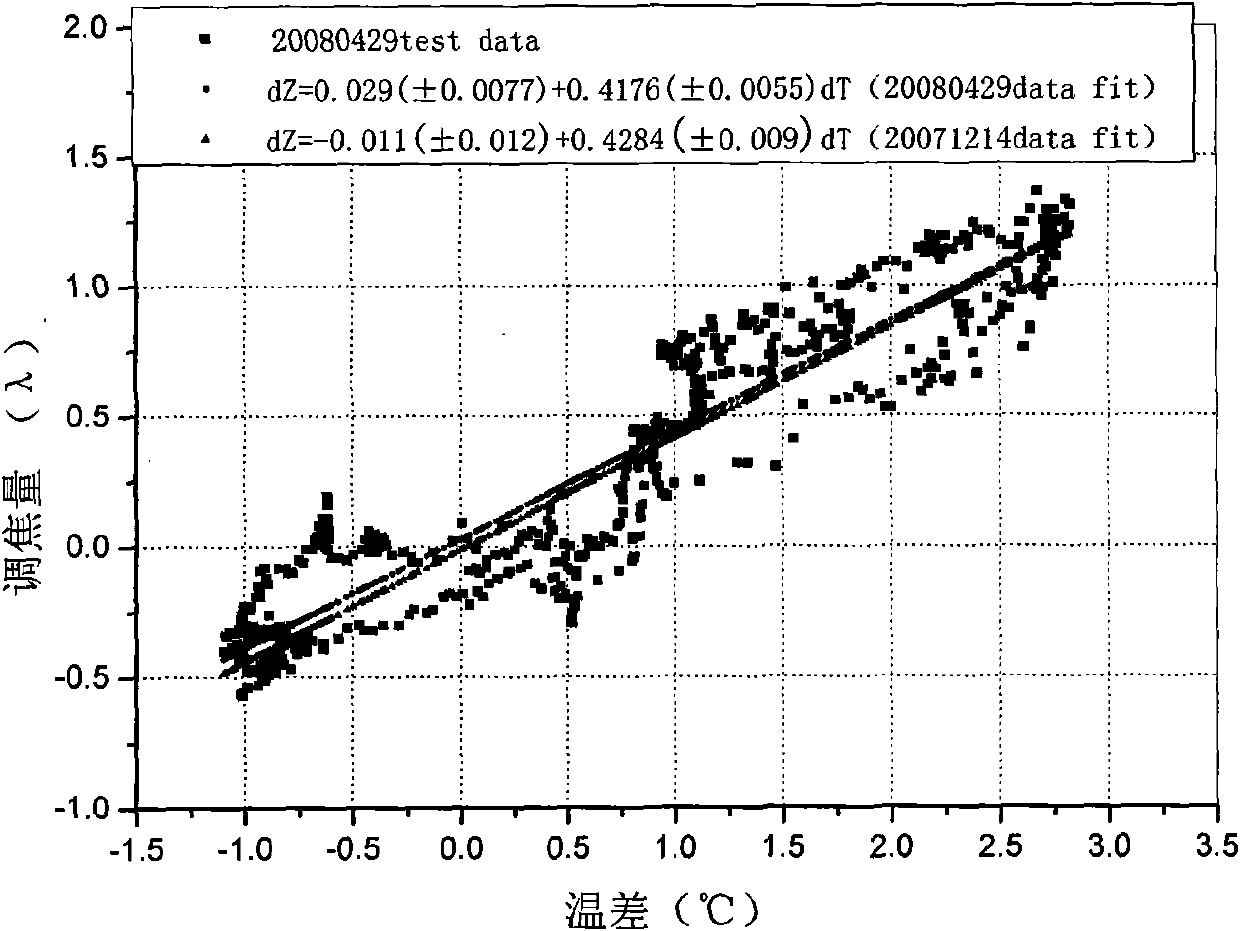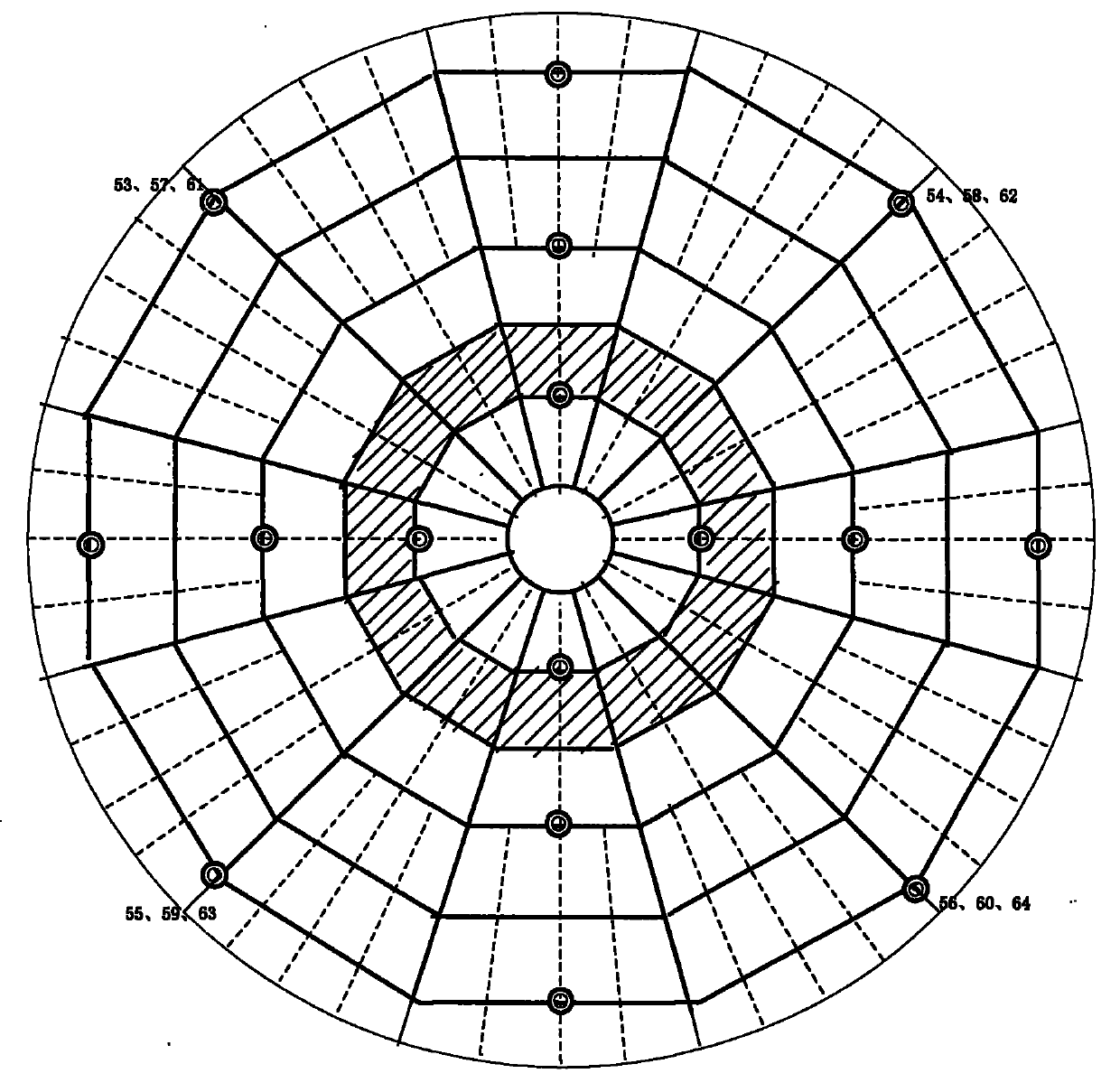Pair surface self-adaption focusing method for radio telescope
A radio telescope, self-adaptive technology, applied in the direction of electrical components, antenna supports/mounting devices, antennas, etc., can solve problems such as changes in antenna efficiency, changes in focal length, flow rate of the source of observation objects or decrease in the accuracy of intensity data, and achieve strength The effect of stability improvement
- Summary
- Abstract
- Description
- Claims
- Application Information
AI Technical Summary
Problems solved by technology
Method used
Image
Examples
Embodiment 1
[0016] The subsurface self-adaptive focusing method of the radio telescope comprises the following steps:
[0017] (1) Install a temperature sensor on the antenna
[0018] Install temperature sensors below the antenna panel and on the upper and lower sides of the back frame. The installation positions of the temperature sensors should be evenly distributed. In the present invention, the temperature sensors use TDC temperature sensors. Installation location such as figure 1 As shown in the distribution diagram of temperature sensors on the panel and the back frame, there are 3 sensors at each position, which are respectively located on the panel, the upper side of the back frame, and the lower side of the back frame.
[0019] (2) Use the astronomical method to adjust the longitudinal focus of the secondary surface:
[0020] On the basis of active control (that is, gravity deformation correction control), the auxiliary surface is translated in the Z direction (closer to or awa...
PUM
 Login to View More
Login to View More Abstract
Description
Claims
Application Information
 Login to View More
Login to View More - R&D
- Intellectual Property
- Life Sciences
- Materials
- Tech Scout
- Unparalleled Data Quality
- Higher Quality Content
- 60% Fewer Hallucinations
Browse by: Latest US Patents, China's latest patents, Technical Efficacy Thesaurus, Application Domain, Technology Topic, Popular Technical Reports.
© 2025 PatSnap. All rights reserved.Legal|Privacy policy|Modern Slavery Act Transparency Statement|Sitemap|About US| Contact US: help@patsnap.com



